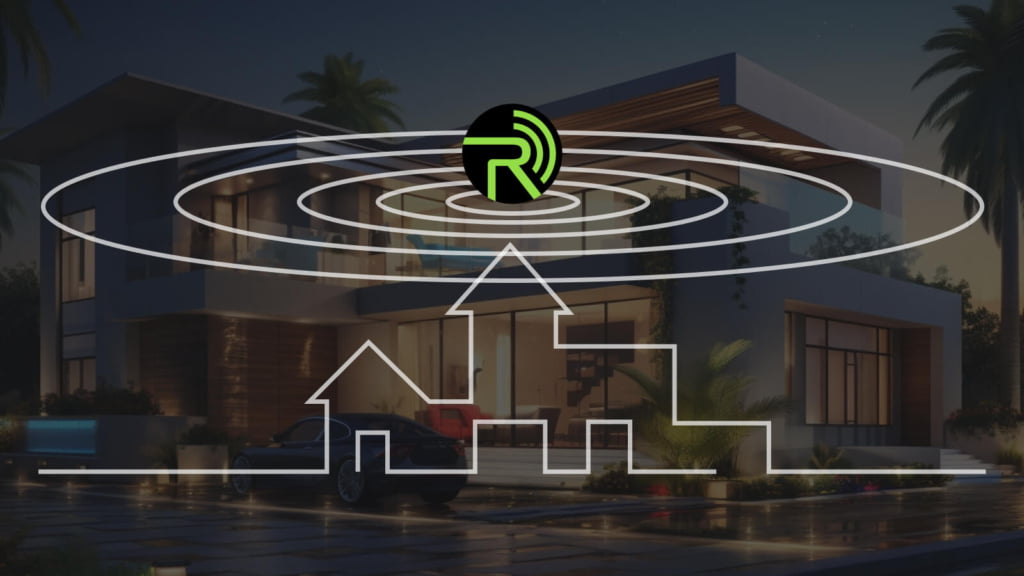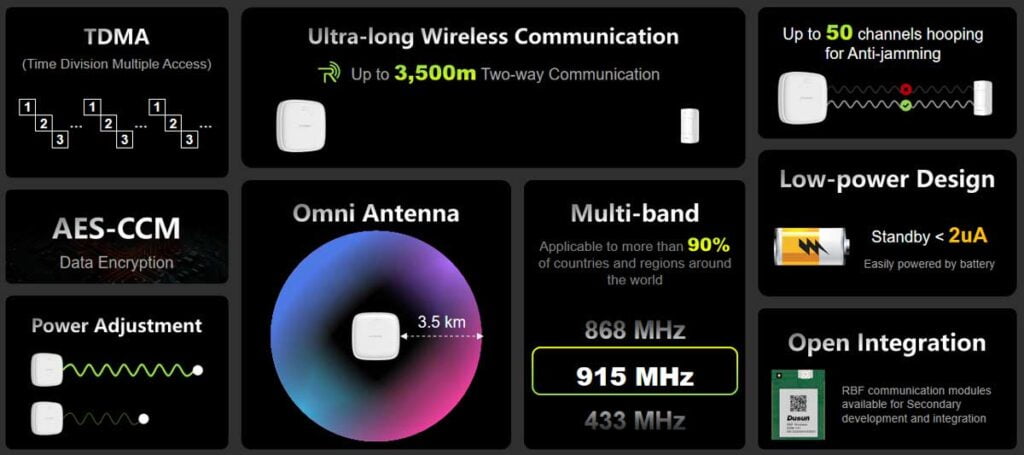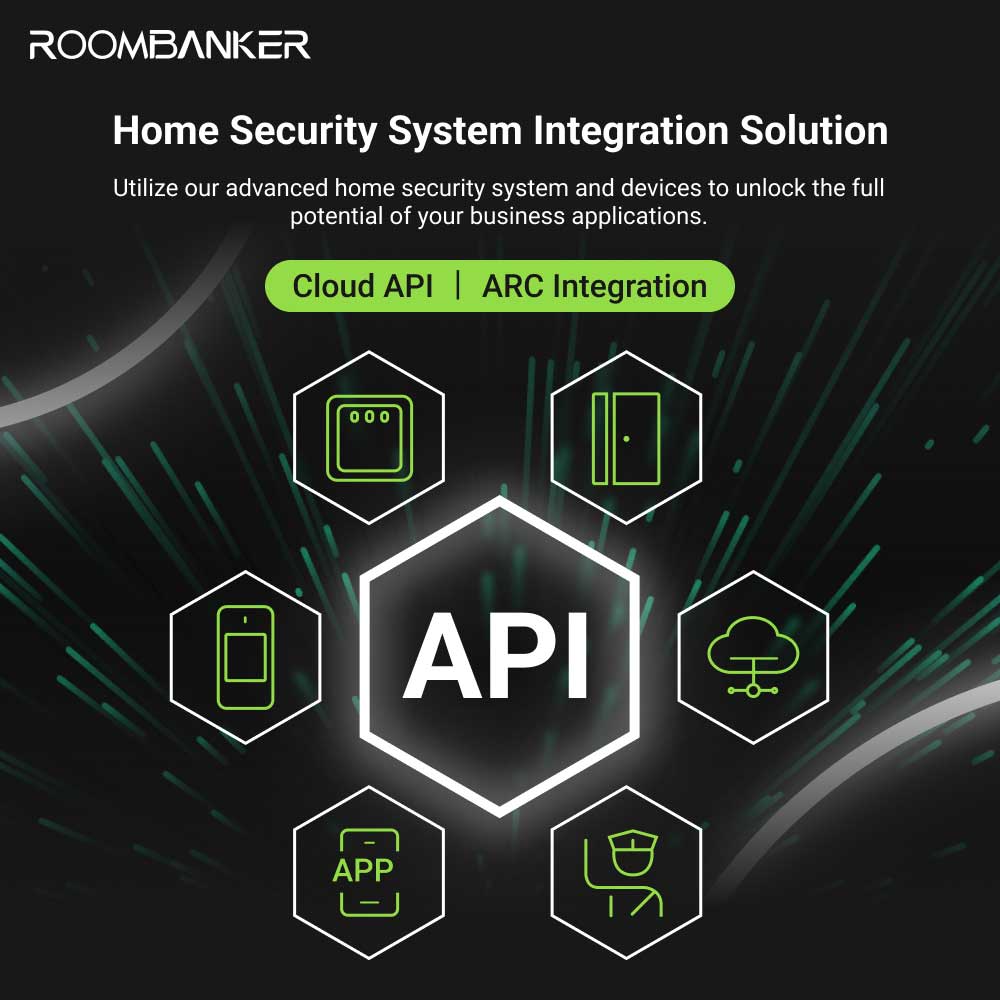IoT Energy monitoring has turned out to become one of the essential aspects of smart homes in today’s society as people aim at reducing expenditure for energy consumption in their homes, for this application portable robust LoRaWAN energy monitoring devices are used to acquire the electrical parameters such as power, voltage, current, and power factor in real-time.
But as can be seen by the constantly increasing demand for home energy management systems, it would be pertinent to look into other wireless protocols that can give similar advantages. In this article, we’ll delve into the advantages of LoRaWAN for energy management and introduce an emerging technology called RBF that presents a compelling alternative for smart home energy monitoring.

Why Choose LoRaWAN Energy Management System?
LoRaWAN (Long Range Wide Area Network) is recognized today as one the most promising IoT protocols, including in the field of energy management systems. Let’s explore the key reasons why LoRaWAN has become a popular choice for smart home energy monitoring:
- Long-Range Connectivity
Another key strength that people like about LoRaWAN is that it can reach large distances. Information on LoRaWAN sensors can be sent to the gateways with distances up to 10 km in excellent conditions. Since the line of sight is an obstruction in urban areas, terminals are limited to approximately 3 kilometers in range. Due to the long-range capacity, LoRaWAN is most appropriate in big areas or compounds encompassing many structures which are hard to place several networks of Wi-Fi or Bluetooth.
- Cost-Effective Solution
As for the specificity of LoRaWAN, it concerns an affordable way of implementing energy monitoring. The communication from the sensors to the gateways takes place via radio waves where the cost of communication is negligible after the sinking of the fundamentals. Further, the LoRaWAN devices themselves are very affordable and are also available for a variety of functions hence it may be a good option for homeowners or businesses who want effective energy management without having to spend a lot of money.
- Ultra-Low Power Consumption
Low power consumption is another feature that has implications for the design of LoRaWAN devices. Note that most of the LoRaWAN energy monitoring sensors are battery operated, and are characterized by extremely long battery lifetime. Low power usage also means less maintenance is needed because the batteries would not have to be replaced as often. In simple terms, this is the case for homeowners since their energy monitoring system will require little effort and is cheaper to maintain definitely in the long run.
- Robust Security Features
On the issue of security, smart home technology cannot afford to have a loophole, and LoRaWAN does well in this area. Most of the data transmitted through LoRaWAN networks is encrypted and secure hence; users concerned about the privacy of energy consumption data need not worry. Most LoRaWAN networks implement two levels of security:
- Device security: This makes it possible to allow only the qualified equipment to connect to the network thus reducing the chances of an invasion.
- Network security: End user data is kept encrypted so that there is no eavesdropping or modification of data in transfer between the end-point and sender.
- Scalability and Flexibility
It is very much convenient to expand or add new LoRaWAN network base stations thus making it easy to include more devices or enhance the monitoring system. Such flexibility presents solar power as suitable for individual homeowners and commercial energy production and use management systems.
- Interference Resistance
LoRa modulation technique which is incorporated in LoRaWAN is very sensitive to interference hence it has proven to perform well in urban areas where several wireless networks are in operation. This is quite essential to guarantee data transmission is always accurate despite the quality of RF surrounding a network.
Working Principle of LoRaWAN Energy Monitoring
LoRaWAN energy monitoring systems are a collection of means that transmit/utilize radio waves to set up a wireless network. It is composed of body sensors, access points, a network server, and an application server. Many are tube-shaped and are powered by a battery; they gather such electrical data as power, voltage, and current. These sensors send this information at certain time instants towards the nearby gateways with the help of LoRa modulation.
Gateways are like passes, sensors send their data to these gateways, which are then transferred to a network server. This server controls the network, the actions may include removal of multiple messages, securing the devices, and so on. The network server then forwards the processed data to an application server. This is where the energy monitoring application operates and such features as data visualization, and consumption analysis are found. These can be through websites or applications that are developed on the user’s interfaces.
This architecture allows for effective, secure, and extensible energy monitoring solutions. Most importantly, LoRaWAN lends itself to home and business use, making it possible to regulate and monitor the use of electricity in large and small capacities alike.
LoRa vs. RBF: Choosing the Right Protocol for Smart Home Energy Monitoring
Although LoRaWAN is one of the most used technologies in energy management, it is not the only available one. One of the up-and-coming technologies that are currently considered to be a more efficient protocol than Z-Wave is known as RBF. Here we provide a brief comparison of these two technologies to assist you with the proper decision about your energy monitoring.
RBF is a wireless communication protocol designed by RoomBanker for their smart homes, including the energy management part. Together with LoRaWAN, RBF uses the sub-GHz frequency band, which means that it can transfer data over a considerable distance and pass through obstacles such as walls.
Key features of RBF technology include:
- Long Range: RBF devices may be made to share information up to distances of about 3 km in urban settings and possibly at even larger distances in rural settings.
- Low Power Consumption: RBF is envisioned for application on battery-powered devices and some of the sensors can work for as long as several years on a single battery.
- High Reliability: It uses new methods of error control and interference whose task is to prevent the failure of data transmission.
- Secure Communication: RBF uses end-to-end encryption to safeguard its users’ data only accessible to the intended receivers.
- Mesh Networking: While the LoRaWAN has a star topology meaning that nodes need to communicate with the gateway, RBF supports a mesh network meaning that nodes can forward messages thus expanding the network coverage.

Comparing LoRa and RBF
Virtually, both LoRa and RBF provide good characteristics when it comes to energy monitoring in smart homes. Here’s a comparison of key aspects:
Range:
- LoRa: Under perfect working conditions, it can go up to 10 km but in an intensive working environment such as a city, it covers a distance of 3 Km.
- RBF: In urban environments, it is up to 3 km but can go further through mesh networking.
Power Consumption:
- LoRa: Brackets with very low power consumption which is suitable in battery-operated devices.
- RBF: Also power devices that should take similar power to LoRa devices, and thus have a similar battery life.
Network Topology:
- LoRa: In the case of CBRN, primarily has star topology only in which the end node is directly connected with gateways only.
- RBF: Has an option to support mesh networking, which means it can create an opportunity for creating a business network with fewer dead zones.
Frequency Band:
- LoRa: Hence, they operate in different Sub-GHz bands depending on the country’s jurisdictional laws.
- RBF: It also ventures in the sub-GHz bands which have similar penetration and range capabilities to the ISM bands.
Ecosystem:
- LoRa: Has a healthy ecology as many of the device manufacturers, as well as the network providers, are already existent.
- RBF: A relatively less developed technology with a shorter history that started gaining momentum mainly with RoomBanker cooperation.
Standardization:
- LoRa: It is reliant on an open standard being managed by LoRa Alliance.
- RBF: A technology belonging to and controlled by RoomBanker.
When choosing between LoRa and RBF for your smart home energy monitoring system, consider factors such as your specific requirements, the size of your property, the availability of devices, and your preferences for open standards versus proprietary solutions.
Long-range Low-powered Home Energy Management Devices Enabled By RBF
RBF technology is applied in a number of energy management devices that are utilized for efficient monitoring and controlling of home energy usage. They include those that use RF communication over long distances while at the same time-consuming low power that can fit any sized home.
Electricity monitoring smart plugs are also one of the most important elements of the RBF environment. They convert ordinary appliances into smart and monitored products with remote control and consumption statistics. RBF wall switches also give an intelligence to the lighting which enhances the usage and control of light through remote operation, energy management, and compatibility with the other smart home gadgets.
With regard to the wide-ranging surveillance aspect, RBF smart meters employ whole-home usage and energy measurement. They offer instantaneous information on the total load of consumption in homes; sometimes the distribution includes circuits and types of appliances. Such meters can identify irregularities, interface with solar systems, and provide tips on how to use less energy.
Collectively, these are called smart devices which are supported by RBF and make up the ecosystem of home energy management. Its long-range and low-power characteristics provide the correct functioning and long lifespan of its batteries regardless of the home environment and let homeowners make intelligent choices regarding the usage of their electricity.
RoomBanker: Seeking Home Energy Management System Partners
It is worth stating that RoomBanker is currently looking for partners to popularize its RBF-based energy management devices. This opportunity is for smart home system integrators who wish to expand their portfolios deeper into the smart home ecosystem but do not want to build every device themselves.

The partnership program is designed to provide the key stakeholders with an array of devices already integrated with the RBF technology that enables long-range and low-power communications. These include the opportunities to get more customized solutions, hi-tech support, and the ability to improve the corresponding market offers.
RoomBanker can be helpful in saving the cost of product development, which enables companies to launch new products in a very short time, and enter the promising smart energy-efficient homes market. The goal of creating such a partnership is to generate new sources of revenue and increase partners’ market shares in the intelligent home market space.
